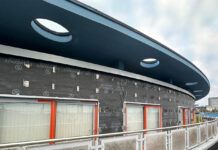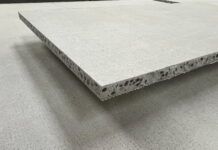The expansion of the gateway scheme and the introduction of the Building Safety Act will make early specification a necessity. For passive fire protection the benefits are clear, with the approach helping to drive up standards to make buildings as safe as possible. Here Craig Abbott, technical director of passive fire protection specialist FSi Promat – part of the Etex group, discusses how early specification will improve fire safety.
While the implementation of the Building Safety Act is still at an early stage, the existing model of design and build will need to be replaced to meet the demands of the gateway scheme, with increased specification at the design stage the obvious solution.
Under the Building Safety Act, introduced following the Hackitt Review into the Grenfell tragedy, the expanded gateway scheme can impose a hard stop on construction projects that don’t adhere to the increased building safety standards – with the provision of passive fire protection systems being an integral part of this new process.
Approval is required from the Building Services Regulator – within the gateway scheme – before any work can get underway. So, architects are required to demonstrate how the building design not only meets the required regulations, but also complies with the demands of the building design, intended use, and is substantiated by the information needed for the golden thread.
Accurate specification
While design and build has been a popular model since the 1980s, enabling contractors to take control of fulfilling the design and construction of a building, the gateway system requires all information relating to building safety to be specified and documented before work can get underway.
Passive fire protection is an essential element of building safety. To this end, it needs to form part of the design that is submitted to the gateway scheme for approval. This makes the early, accurate specification of fire stopping and cavity barriers a critical part of any construction project.
From a passive fire protection point of view the changes in regulations support the standards that the industry strives to uphold – and early specification will support this. Importantly it ensures that the correct passive fire protection system is in place for that specific building or application, taking into consideration factors including movement, interactions with the substrate, penetrations that may breach a seal, and that effective compartmentation is in place to help to control the spread of fire.
Early engagement
Through early engagement with manufacturers, such as FSi Promat, specifiers can access the technical information needed to accurately specify products to accommodate potential concerns, ensuring that the correct fire stopping or cavity barrier systems are specified for the correct application. FSi Promat provides extensive support to architects, specifiers, contractors and installers, including full access to technical specifications, performance details and third-party certification to provide absolute reassurance at the point of specification.
For too long fire stopping has been an afterthought, instead of an integral part of the building’s design, which can lead to issues such as non-compliance where products have been switched out at a later stage. The need to report changes under the gateway scheme will help to address this but also avoid delays as it is imperative to specify the correct products at the design stage.
To uphold the standards we expect, expert technical support should be sought from a manufacturer’s specification department, or technical team, at the earliest point to allow any potential issues to be identified to help avoid delays further down the line.
Technical support
Experience and technical expertise are essential to accurate specification, and FSi Promat will work alongside specifiers to deliver a passive fire protection solution that meets the demands of the project.
To support the correct specification of passive fire protection, FSi Promat carries out industry-leading, robust testing to ensure as many different applications as possible are covered. Where there isn’t a tested solution, FSi Promat offers guidance, and technical evaluations to advise on product suitability.
This drastically reduces the potential for remedial work, while waste is minimised as the system is designed to fit the project from day one.
This attention to detail needs to be underpinned by clear certification backed by third-party testing. This should then be set out in the maintenance manual and the installation recorded to leave no doubt about the quality of the passive fire protection.
Transparency, clear documentation and early engagement with the manufacturer will deliver the level of accuracy needed to ensure passive fire protection is specified correctly at the earliest stage to support timely project delivery and fire safety excellence.




